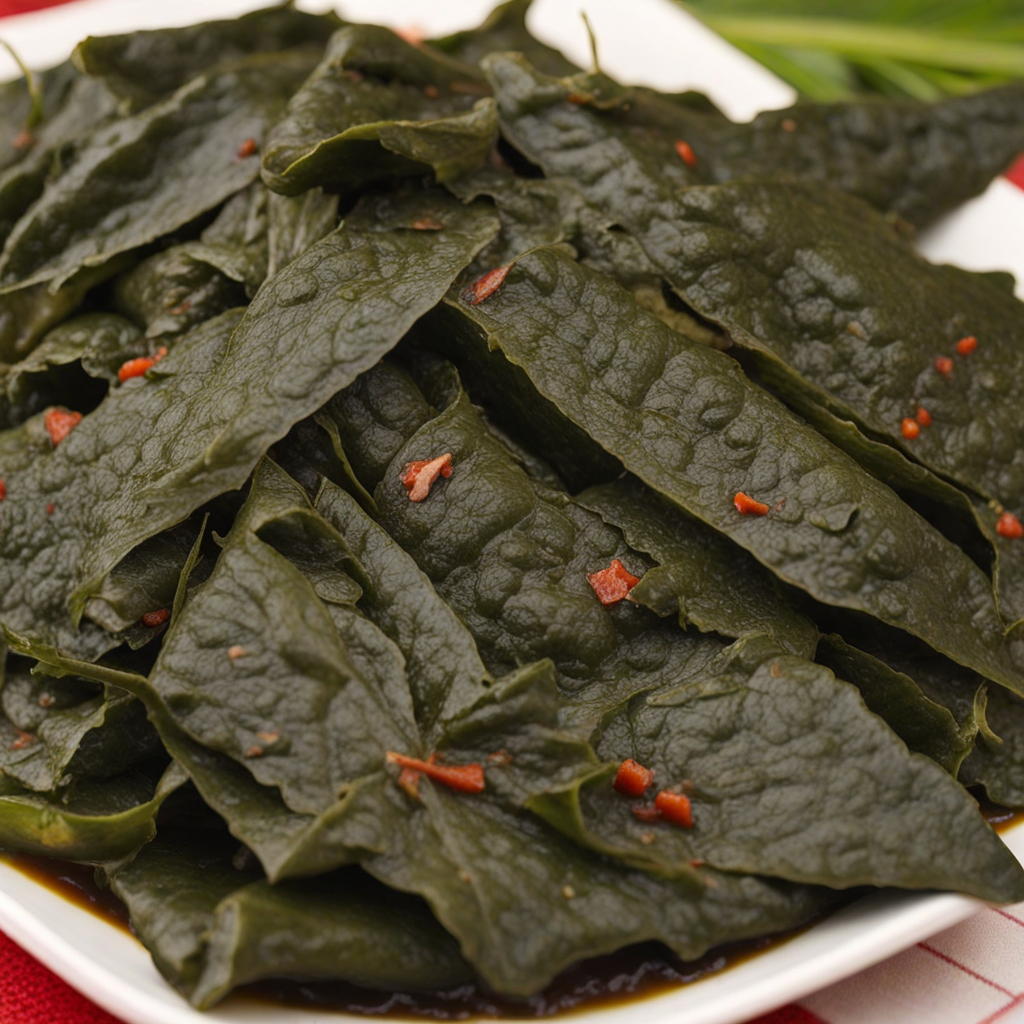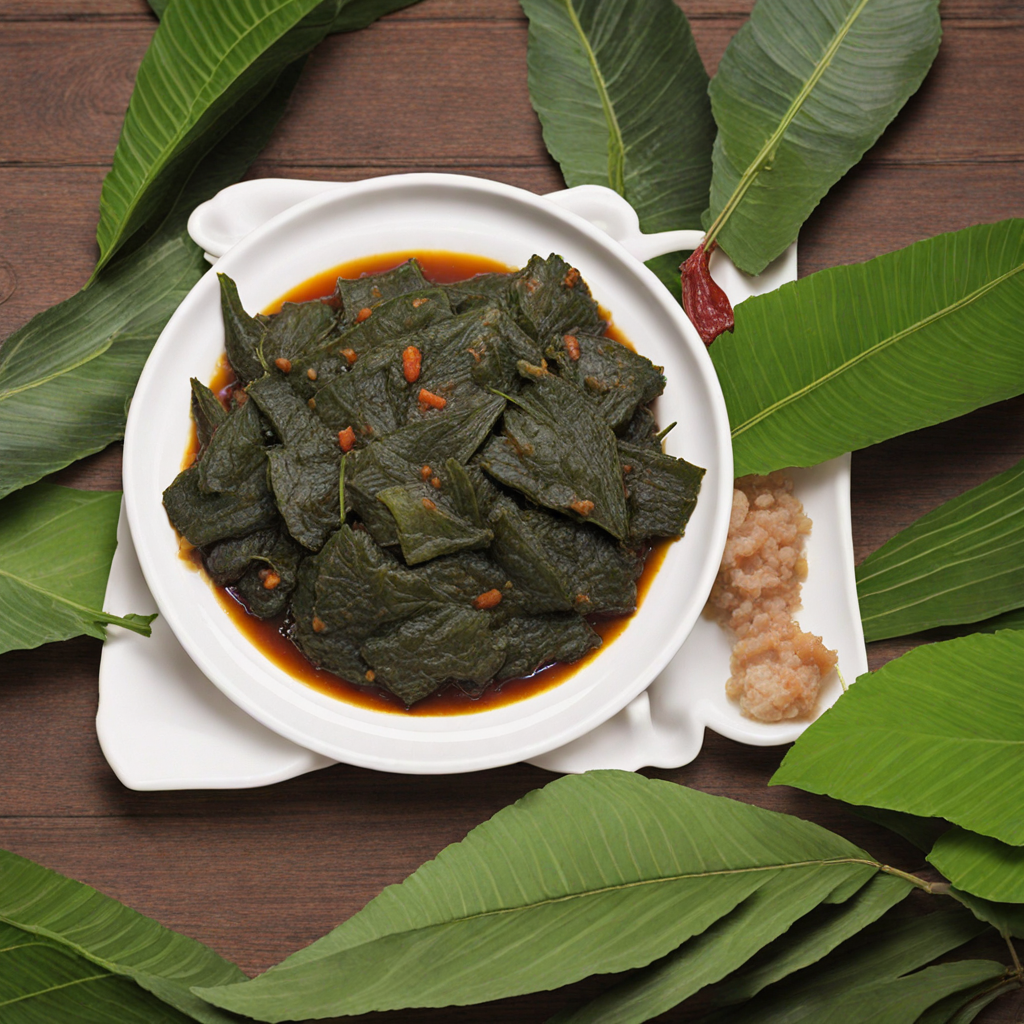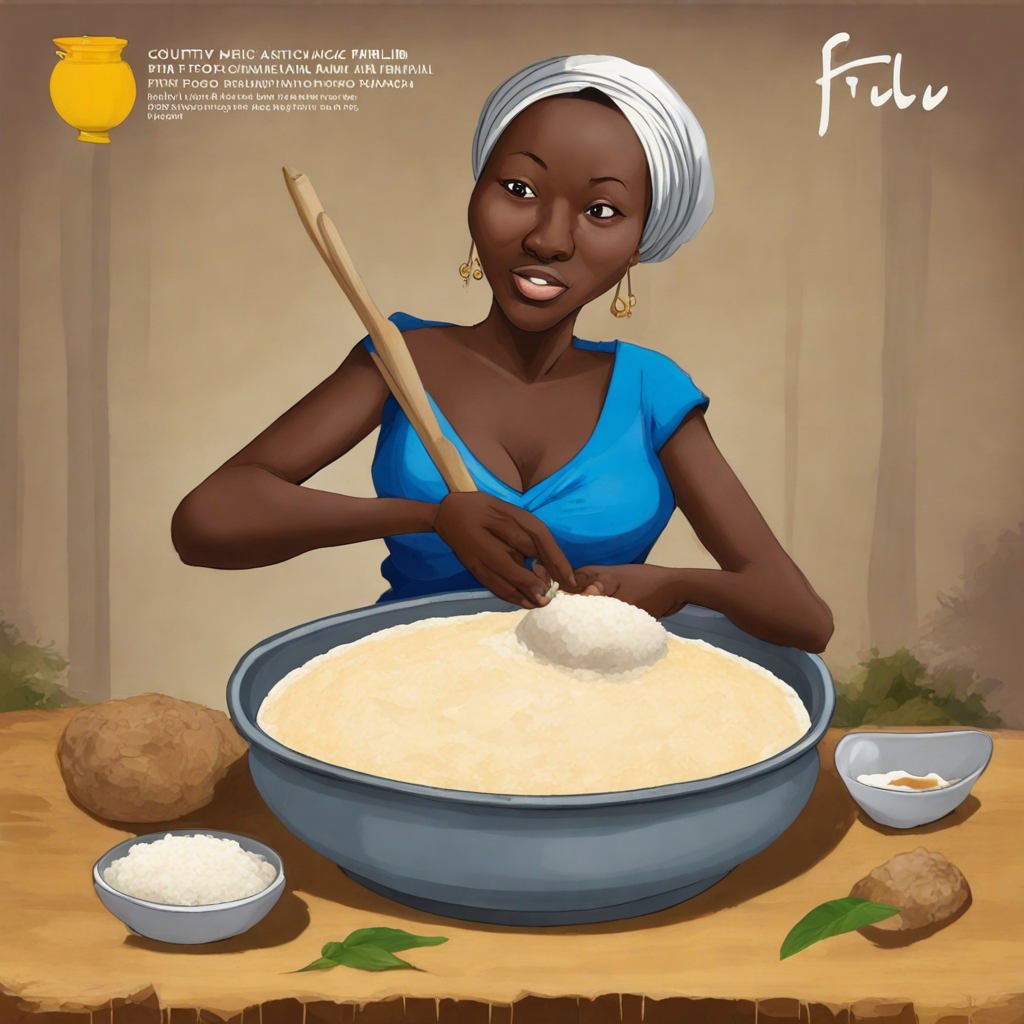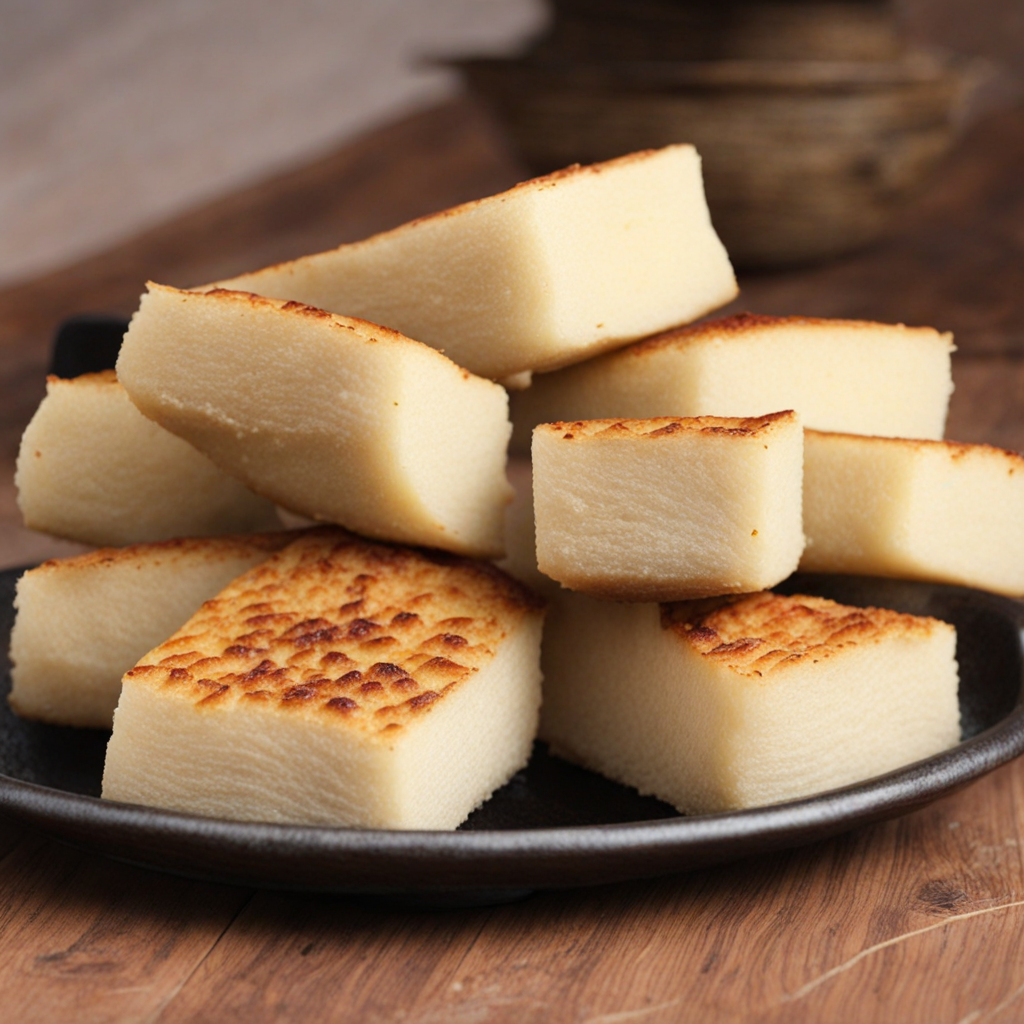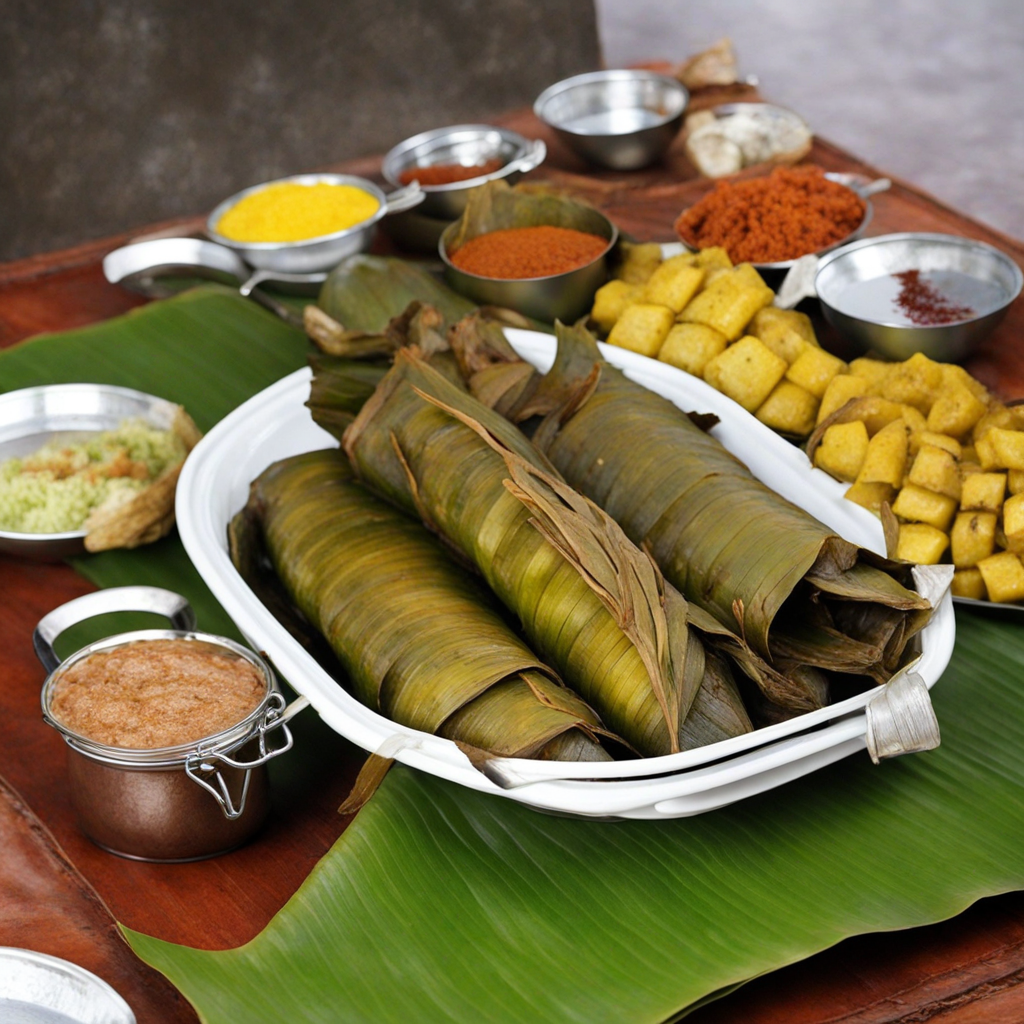Cassava Leaves
Cassava leaves, a beloved staple in the Central African Republic, offer a unique and rich flavor profile that tantalizes the taste buds. When cooked, the leaves possess a slightly earthy and nutty taste, complemented by their tender texture. They are commonly prepared in a variety of dishes, often combined with ingredients like ground peanuts, palm oil, and spices, which enhance their inherent flavors. This vibrant green vegetable is not only delicious but also packed with nutrients, making it a wholesome addition to any meal. The preparation of cassava leaves typically involves a thorough cooking process to eliminate their natural bitterness, which can be a surprising aspect for first-time tasters. Once properly cooked, they can be used in stews, soups, or served as a side dish, showcasing their versatility. The leaves absorb flavors beautifully and can be paired with proteins such as fish, chicken, or beans, making them a perfect complement to a variety of dishes. The result is a hearty and satisfying meal that reflects the culinary traditions of the region. For those seeking a culinary adventure, cassava leaves present an opportunity to explore the flavors of Central Africa. The combination of their unique taste, nutritional benefits, and adaptability in cooking makes them a delightful ingredient to discover. As you savor dishes featuring cassava leaves, you'll find yourself transported to the heart of the Central African Republic, experiencing a taste of its rich cultural heritage and the warmth of its cuisine.
How It Became This Dish
Feuilles de Manioc: A Culinary Heritage of the Central African Republic #### Origins and Historical Context Feuilles de manioc, or cassava leaves, have deep roots in the culinary traditions of Central Africa, particularly in the Central African Republic (CAR). The cassava plant (Manihot esculenta) is native to South America, where it was cultivated by indigenous peoples long before the arrival of European colonizers. The plant made its way to Africa in the 16th century, thanks to the transatlantic slave trade and the exploration of the continent by European powers. In Africa, cassava quickly adapted to various climates and became a staple food due to its resilience and high carbohydrate content. In the CAR, cassava is cultivated extensively; it thrives in the region's tropical climate and is a vital part of the agricultural landscape. The leaves of the cassava plant, often overlooked in other parts of the world, are a nutrient-rich byproduct that has been embraced by Central African peoples. Feuilles de manioc are integral to the local diet, providing essential vitamins, minerals, and protein, especially in communities where animal protein is scarce. #### Cultural Significance Feuilles de manioc are more than just a staple food; they embody the cultural identity and culinary heritage of the Central African Republic. Traditionally, they are cooked in various ways, often stewed with ingredients such as groundnuts, palm oil, or fish, and served alongside starchy staples like cassava itself or rice. This preparation not only enhances the flavor but also ensures a well-rounded meal, providing a balance of carbohydrates, proteins, and fats. In many Central African communities, the preparation of feuilles de manioc is a communal activity that fosters social bonds. Families often gather to wash, chop, and cook the leaves, sharing stories and laughter in the process. This communal cooking reflects the broader cultural values of the CAR, where food is often a medium for social interaction and community building. Feuilles de manioc also play a role in traditional ceremonies and celebrations. They are often featured in feasts during weddings, religious holidays, and other significant events, symbolizing abundance, unity, and cultural pride. In this way, the dish serves as a culinary expression of the Central African identity, linking generations through shared culinary practices. #### Development Over Time The history of feuilles de manioc is marked by adaptation and resilience, much like the cassava plant itself. The dish has evolved over time, influenced by various factors, including colonialism, globalization, and contemporary culinary trends. During the colonial era, European powers imposed their agricultural practices and food preferences on African populations. While cassava and its leaves remained staples, the introduction of new ingredients and cooking techniques began to influence traditional recipes. For example, the use of imported spices and condiments started to find their way into local kitchens, adding new dimensions to the flavor profiles of feuilles de manioc dishes. In recent decades, globalization has further transformed the culinary landscape of the CAR. The influx of international foods and culinary influences has led to a blending of traditional and modern cooking practices. Young chefs and home cooks are experimenting with feuilles de manioc, incorporating them into fusion dishes that reflect both local and global culinary trends. This evolution has not diminished the significance of feuilles de manioc; rather, it has revitalized interest in traditional ingredients, showcasing their versatility and nutritional value. Moreover, as awareness of food security and nutrition has grown, so too has the recognition of cassava leaves as a superfood. Nutritional studies have highlighted their high protein content, vitamins A and C, calcium, and iron, positioning them as an important component of a healthy diet. This newfound appreciation has encouraged farmers to cultivate cassava specifically for its leaves, leading to increased agricultural production and economic opportunities for local communities. #### Challenges and Future Prospects Despite its cultural and nutritional significance, the cultivation of cassava and its leaves faces several challenges. Climate change poses a significant threat, impacting crop yields and food security in the CAR. Additionally, the reliance on cassava as a primary food source has made communities vulnerable to pests and diseases that can devastate crops. Efforts to combat these challenges are underway. Agricultural initiatives focused on sustainable farming practices and the promotion of crop diversity are increasingly being implemented. By educating farmers on climate-resilient agricultural techniques, there is potential to enhance the resilience of cassava cultivation and ensure that feuilles de manioc remain a staple in the Central African diet. Furthermore, the growing interest in plant-based diets and the global trend toward sustainability may provide new opportunities for the promotion of feuilles de manioc. As international markets seek out nutritious and environmentally friendly food sources, cassava leaves could gain recognition beyond their traditional borders, creating economic opportunities for farmers in the CAR. #### Conclusion Feuilles de manioc represent a rich tapestry of history, culture, and resilience in the Central African Republic. From its origins as a hardy crop brought from South America to its role as a cornerstone of local cuisine, cassava leaves embody the spirit of the people and their connection to the land. As the world becomes increasingly aware of the nutritional and cultural importance of traditional foods, feuilles de manioc stand poised to reclaim their place in the global culinary lexicon. The story of feuilles de manioc is not just about food; it is a narrative of survival, community, and identity. As it continues to evolve in the face of modern challenges, this beloved dish reminds us of the importance of preserving culinary heritage while embracing innovation and sustainability. In the heart of the Central African Republic, feuilles de manioc remain more than a meal; they are a symbol of resilience and a celebration of cultural identity, weaving together the past, present, and future of a vibrant community.
You may like
Discover local flavors from Central African Republic


